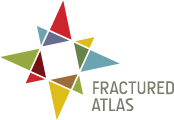While we hold to no hard and fast rules regarding our artistic practice for creating new work, generally Akropolis Performance Lab’s creative process happens in three principal phases:
- Generation
- Contextualization
- Actualization
This short piece is intended to introduce our methodology to new ensemble members and those curious about how we work.
Generation
The initial phase of production work involves the generation of actions, counter-actions, dances, and movement sequences which will serve as the raw material for the development of the eventual performance structure. Except for rare occasions, the play-text, story, or subject of the piece does not serve as source material during this period of work. Instead, the director provides the actors with themes, images, poetry, questions/problems related to the primary material but not directly linked to it. Often these connections are ambiguous or clandestine, since the intention is for the actors to deliberately not work in a representational manner. Our purpose is to trigger in the actor a creative process which manifests through highly personalized behavior. The director must propose material which carries with it deep-rooted (even if obscure) connections to the overall vision for the piece, and which simultaneously remains open enough to ensure that the actor will find her/his psyche engaged in an intimate, positive, and creative way.
The work of this period is dominated by the actor’s creativity and perseverance. The director solely provides the impetus for work, and guidance and inspiration as the actors struggle to draw these performance elements from within themselves.
This work generally falls into one of two categories: Improvisations or Compositions. Here are examples of how we use each:
Improvisations
It’s important to note that although these are called improvisations, the actor and director work closely to capture the substance of the initial improvisation and explore and structure it through a process of repeated re-improvisation.
Guided Improvisation: The director leads the actor through a sequence of suggestions aimed at stimulating the actor’s subconscious to produce images, associations, and memories which the actor responds to through active behavior.
Themed Improvisation: The director provides the actor with a specific subject (a photo, a line of poetry, a situation, etc.) which the actor investigates spontaneously.
Structured Improvisation: Actors improvise within a story, through-line or other predetermined progression of events.
Active Imagination: Based on Jung’s technique, the actor elaborates an improvisation in reaction to dream images and events.
Compositions
Compositions are actor-generated and elaborated micro-performances developed in response to stimulus from the director. The director then works with the actor to refine and give them detail.
Performance Action: Narrative structure (Beginning/Middle/End) using fiction, poetry, visual art, or music as subject matter.
Memory Action: Based on the actor’s personal biography.
Dance of Images: Non-narrative movement structure based on montage of selected images.
Shadow Play: From Jung again, the Shadow Play is composed of personal aspects, traits, and behaviors generally kept hidden or unconscious by the actor.
Persona Triptych: A structure in three movements (each with clear B/M/E), based on a fictional or historical figure.
- Private Moment—the person alone
- Intimate Moment—with 1-2 others
- Public Moment—in the presence of a group or in the open
Dream Investigation: Physicalization of subconscious material expressed through dream images.
Contextualization
Throughout the generative period, the director has observed with great care the evolution of the actors’ performance elements, attentive to any opportunities for multiple actors’ work to be brought together to create a new, more complex scenic moment, and for potential placement of this work within the greater performance structure. During this contextualization the company experiments with montage and juxtaposition of previously independent material. The director engages much more directly in the process at this point: combining, adapting, elaborating, and eliminating the material in order to begin weaving together the performance text, including the introduction of any songs being independently worked and material from the play-text (if there is one).
At times, new material is needed in response to this developing score or to add justification to existing behavior within the new context, which means it’s possible for there to be a creative dialogue between the generative and contextualizing periods. The aim of this work is to establish relationships within and to deepen personal connections to both the original premise as well as the emerging narrative in the progression toward the final phase of work.
Actualization
This work involves formalizing the narrative structure and detailing the performance text. It is potentially the most challenging period, particularly for the actor, who must now struggle to maintain sincerity and spontaneity in the work even as the performance score becomes more and more precisely defined.The actors must be rigorous with themselves and diligent in their way of approaching the work. They must find the way to dance along the confluence of structure and vitality to give their work amplified dynamism. The challenge now for actor and director is simplification: not reducing or eliminating complexity but rather concentrating the performances to their essentials. Sometimes absorbing gross movements back into the body of the actor to reveal only the Action Potentials, at other times drawing them out more fully.
The director also must now turn attention over to how the performance montage will be received by the spectator. Actions are given specific spatial arrangement. Occasionally, new business or blocking must be created to tie together the main events into a logical, cohesive framework. The director must carve time and route the transference of energy in an effort to establish a complex, vital rhythm. All of this must be accomplished with enough time for the actors to absorb all of these technical adaptations so precisely as to be able to ultimately throw away concern for them, transcending the formalities of technique in the moment of performance.



